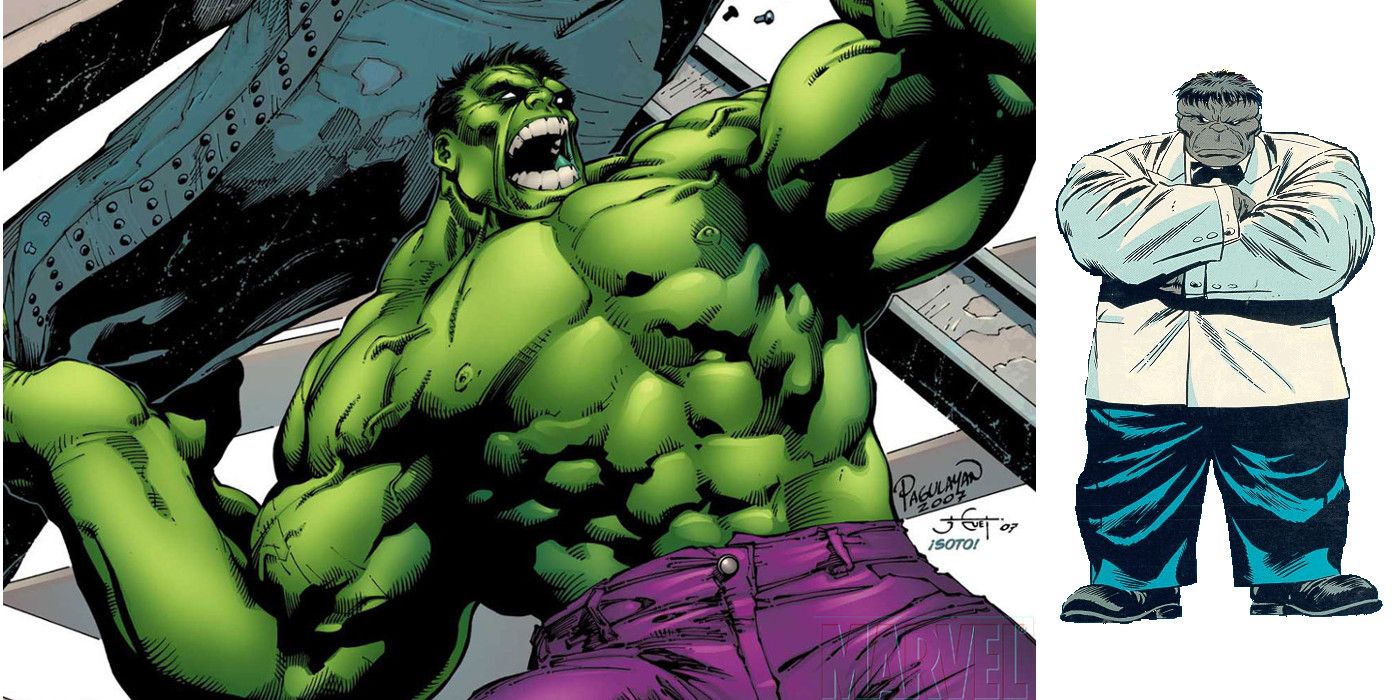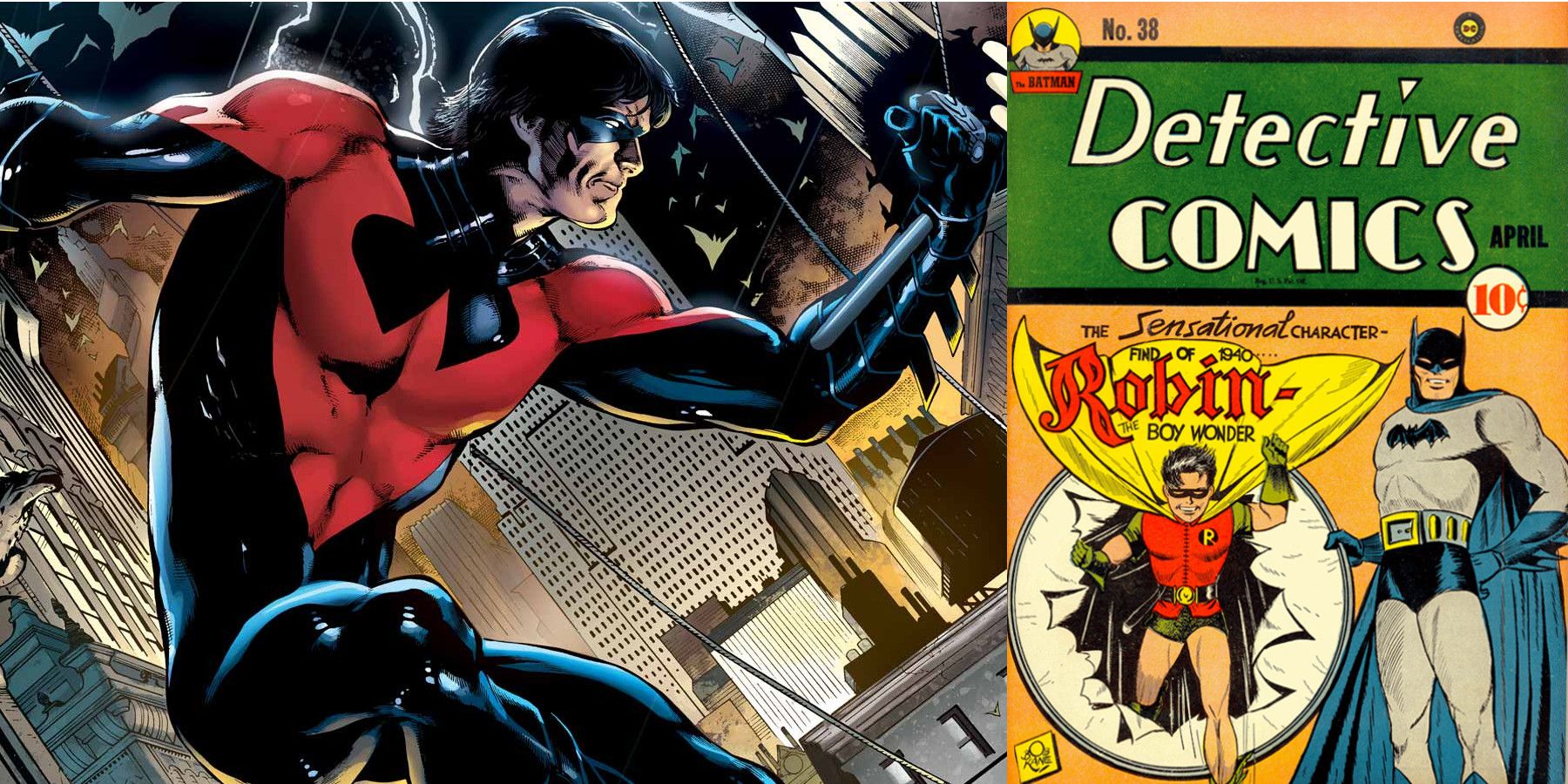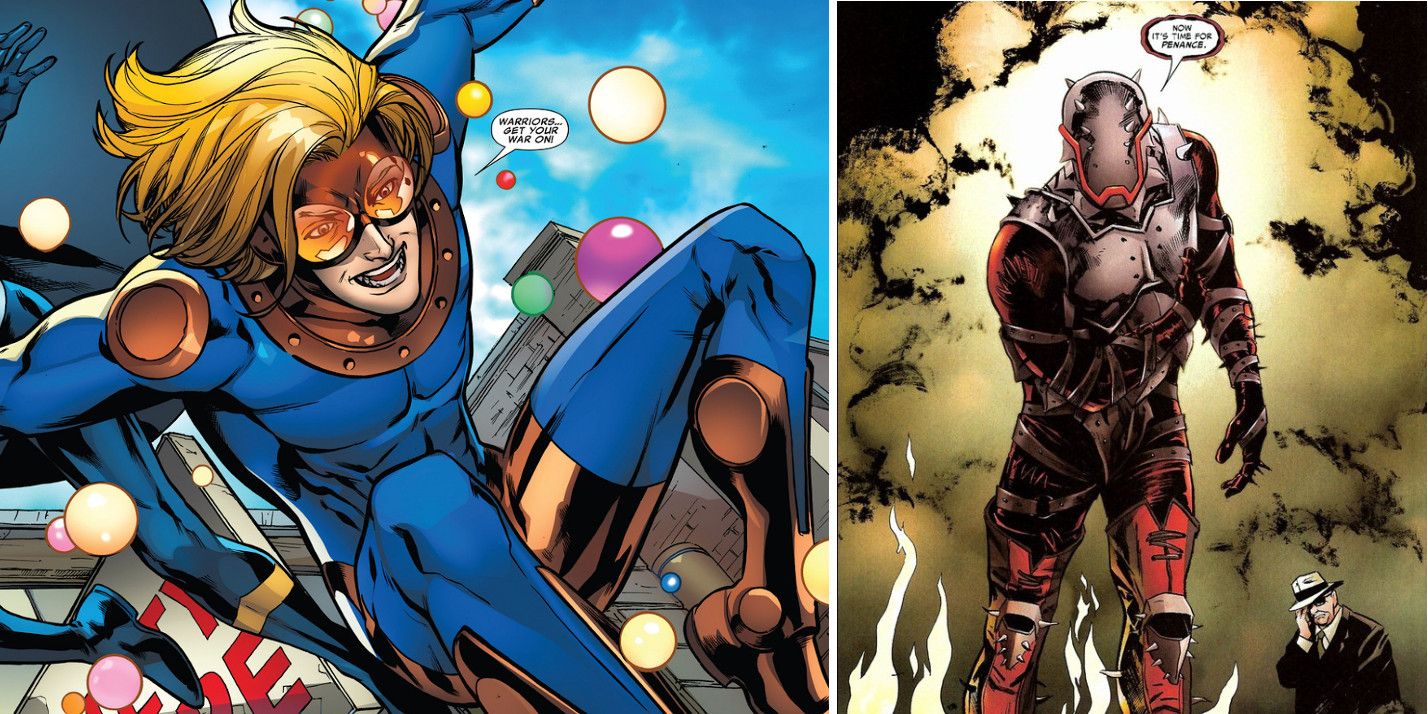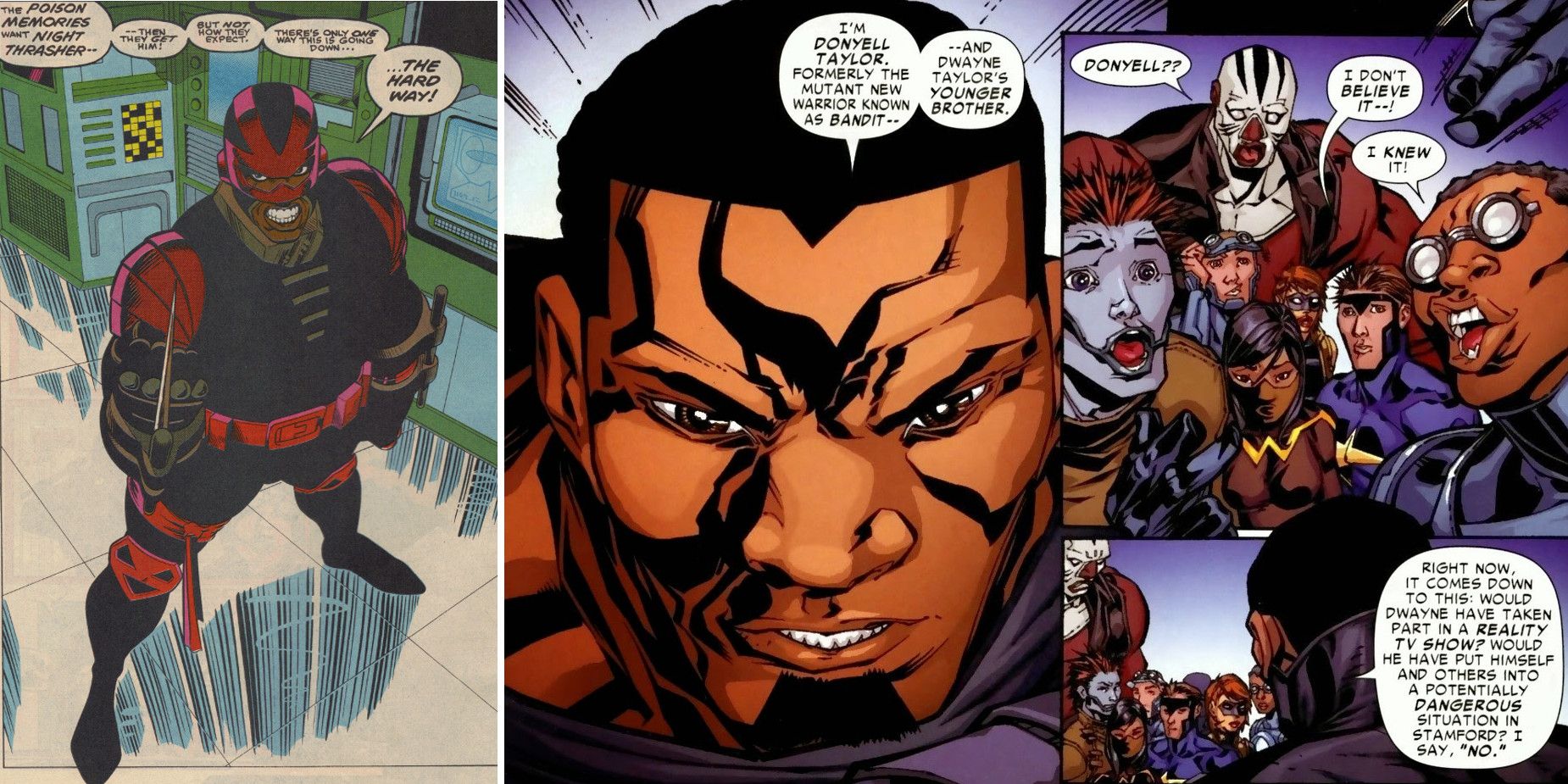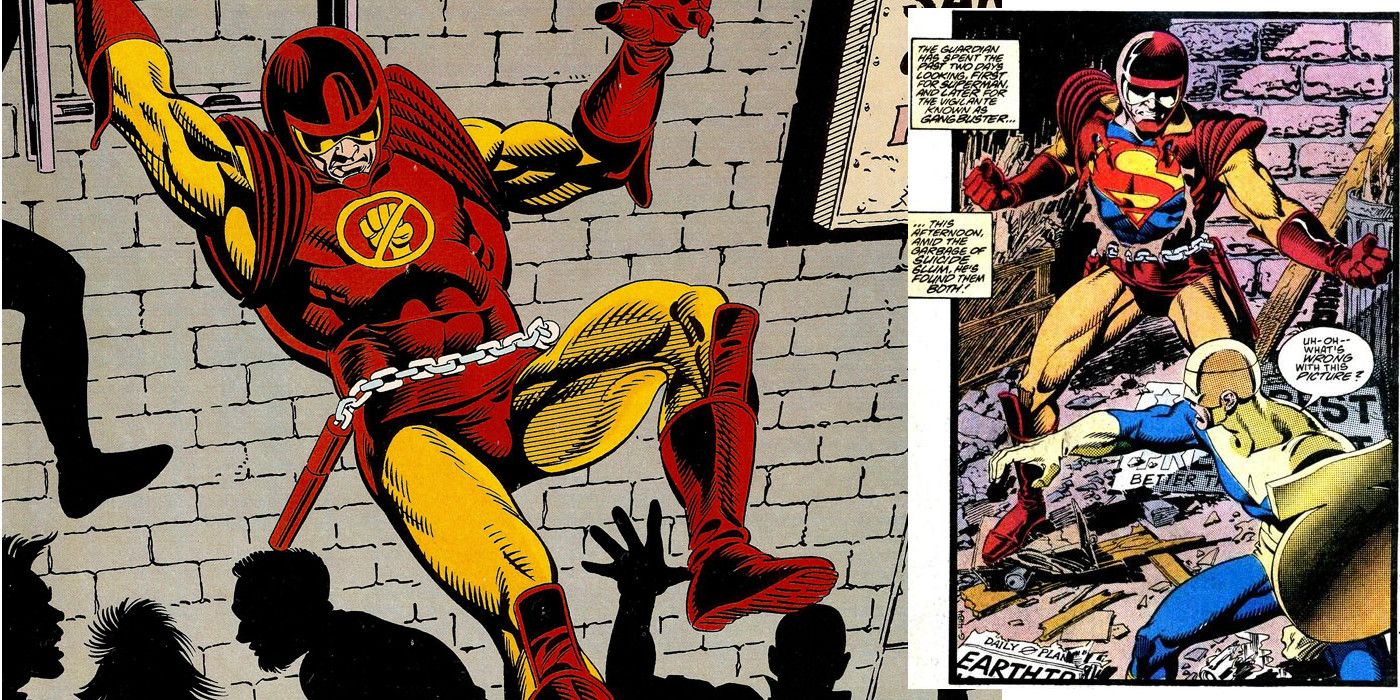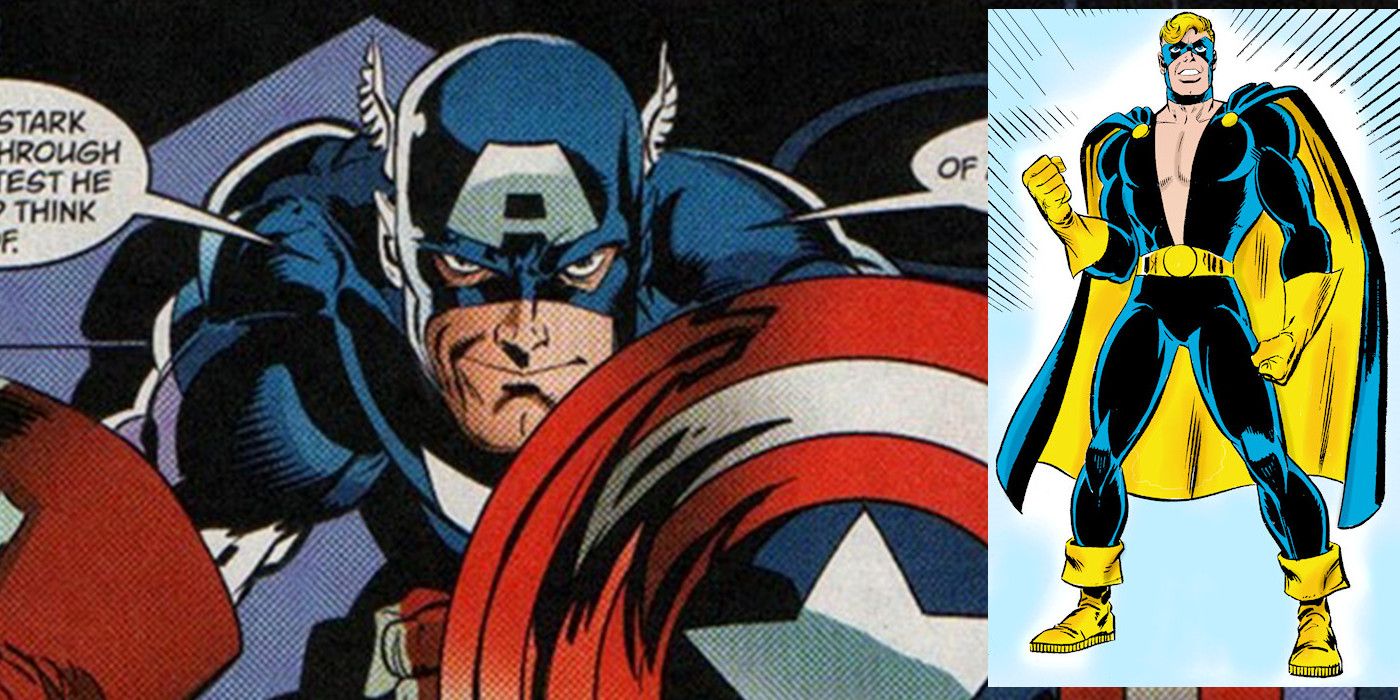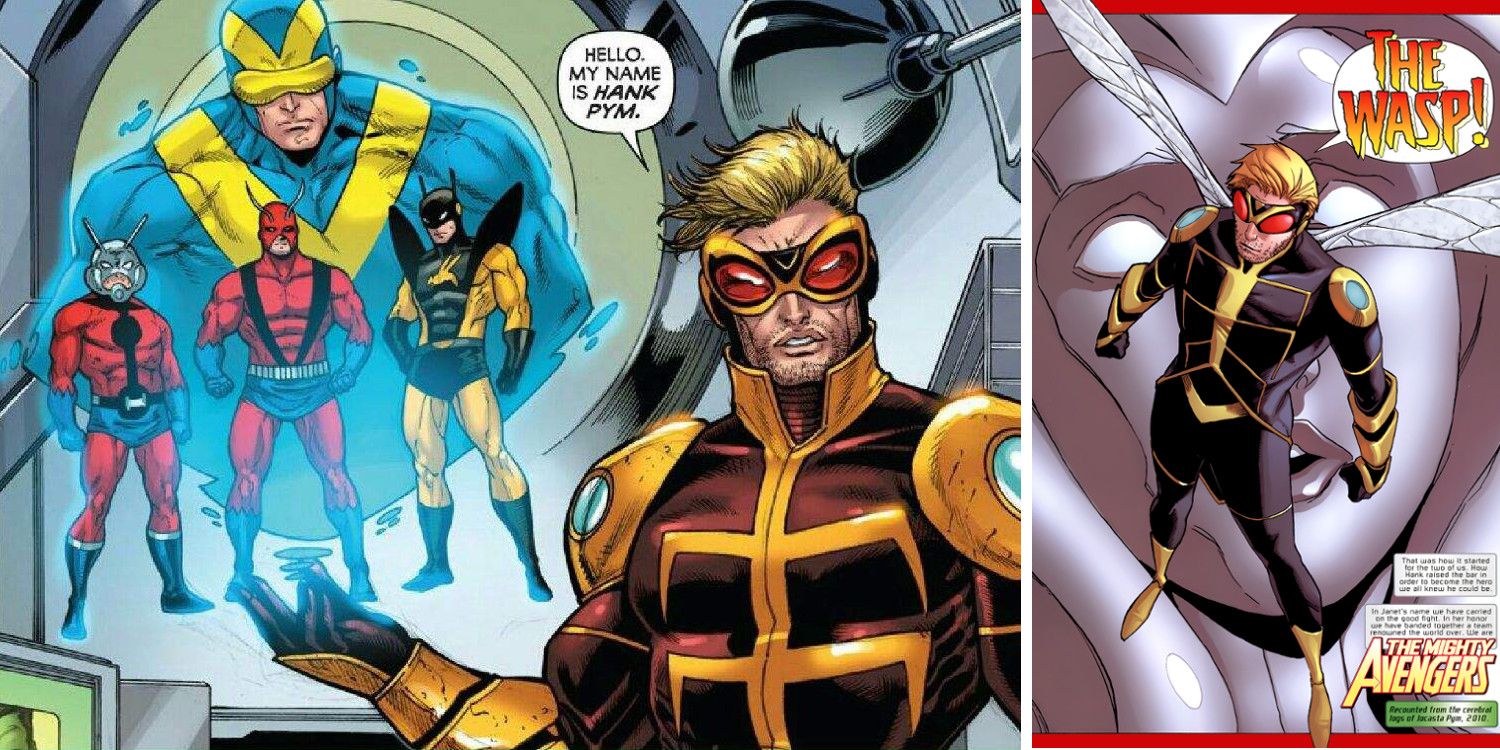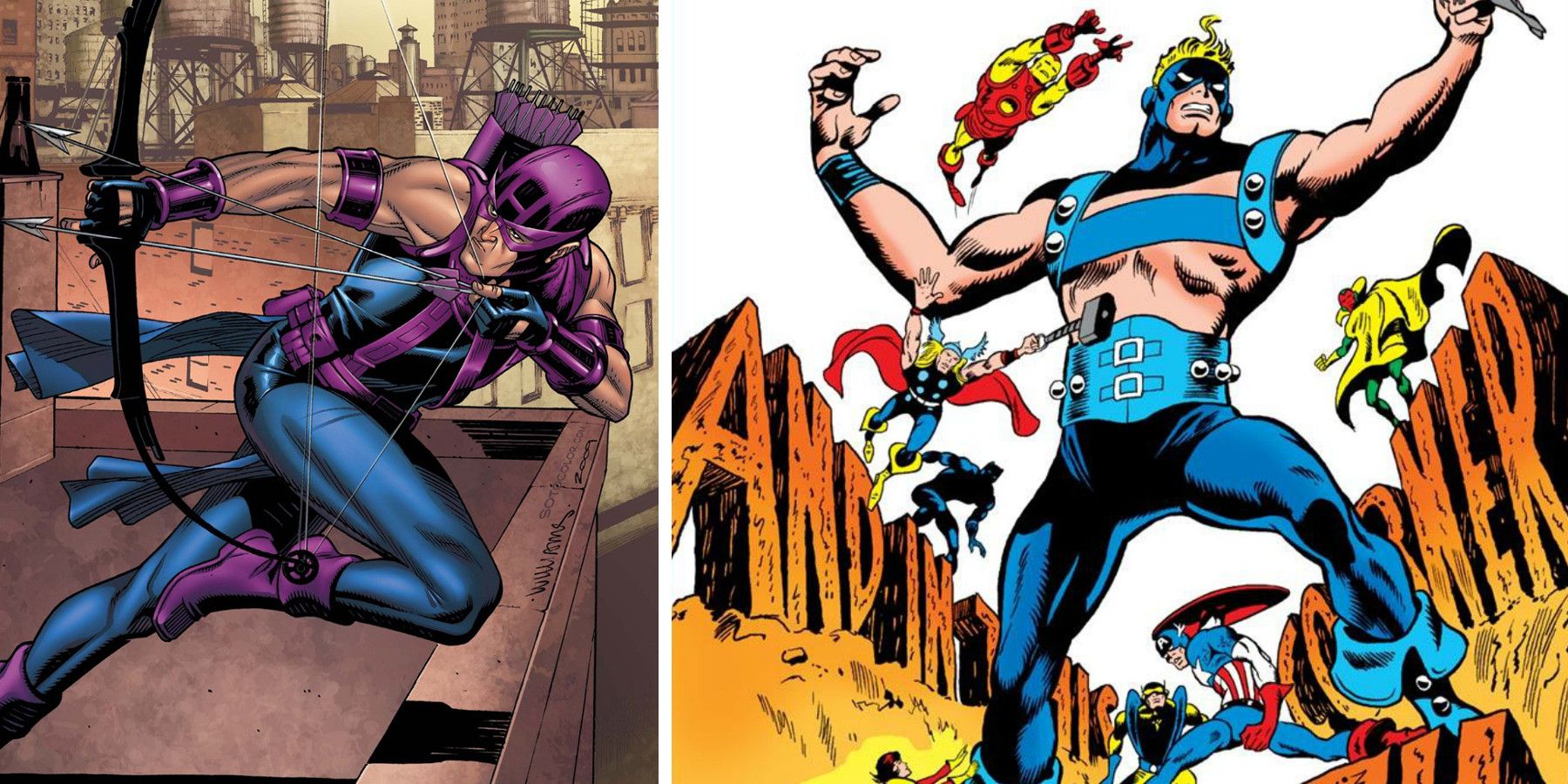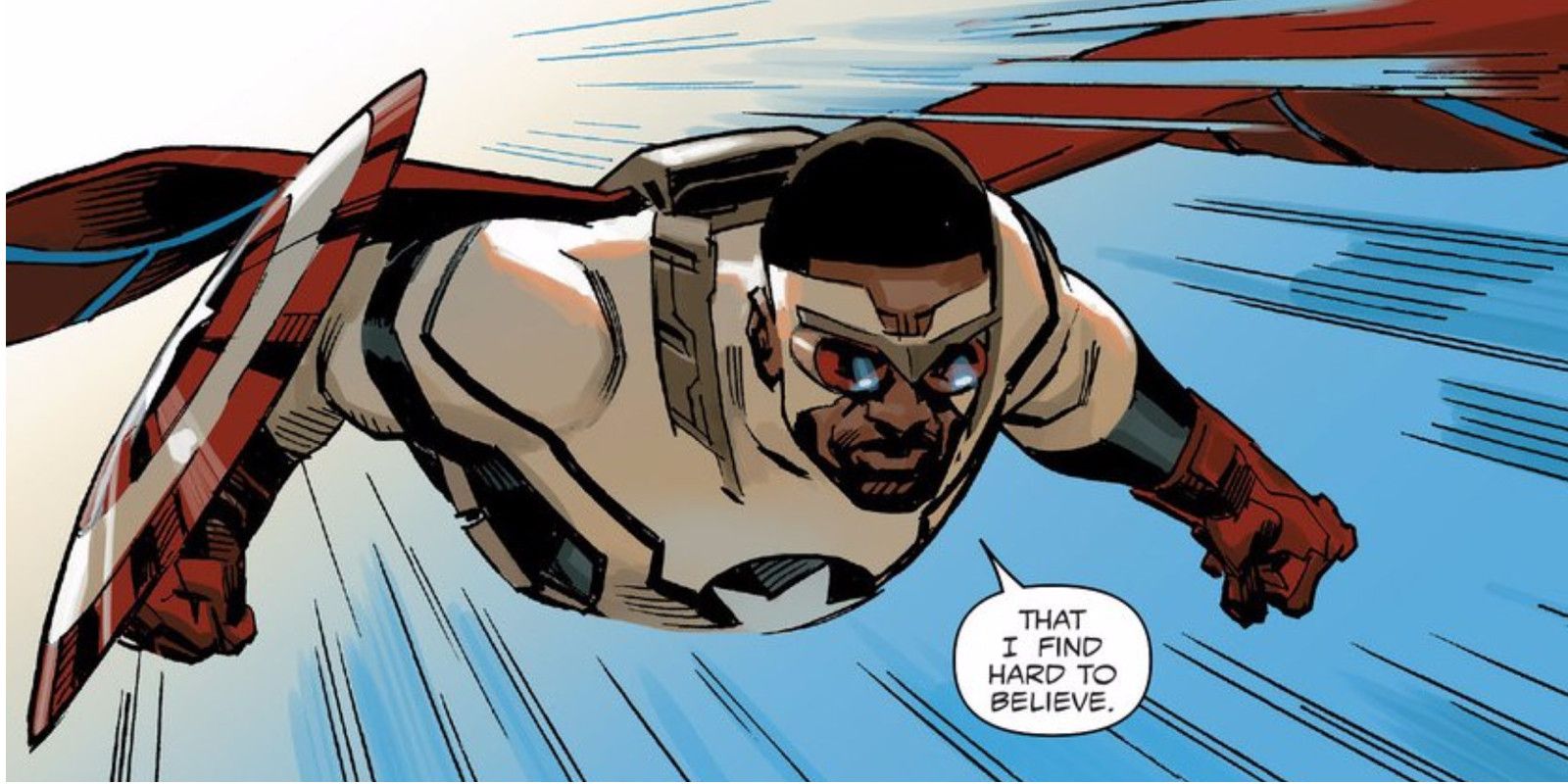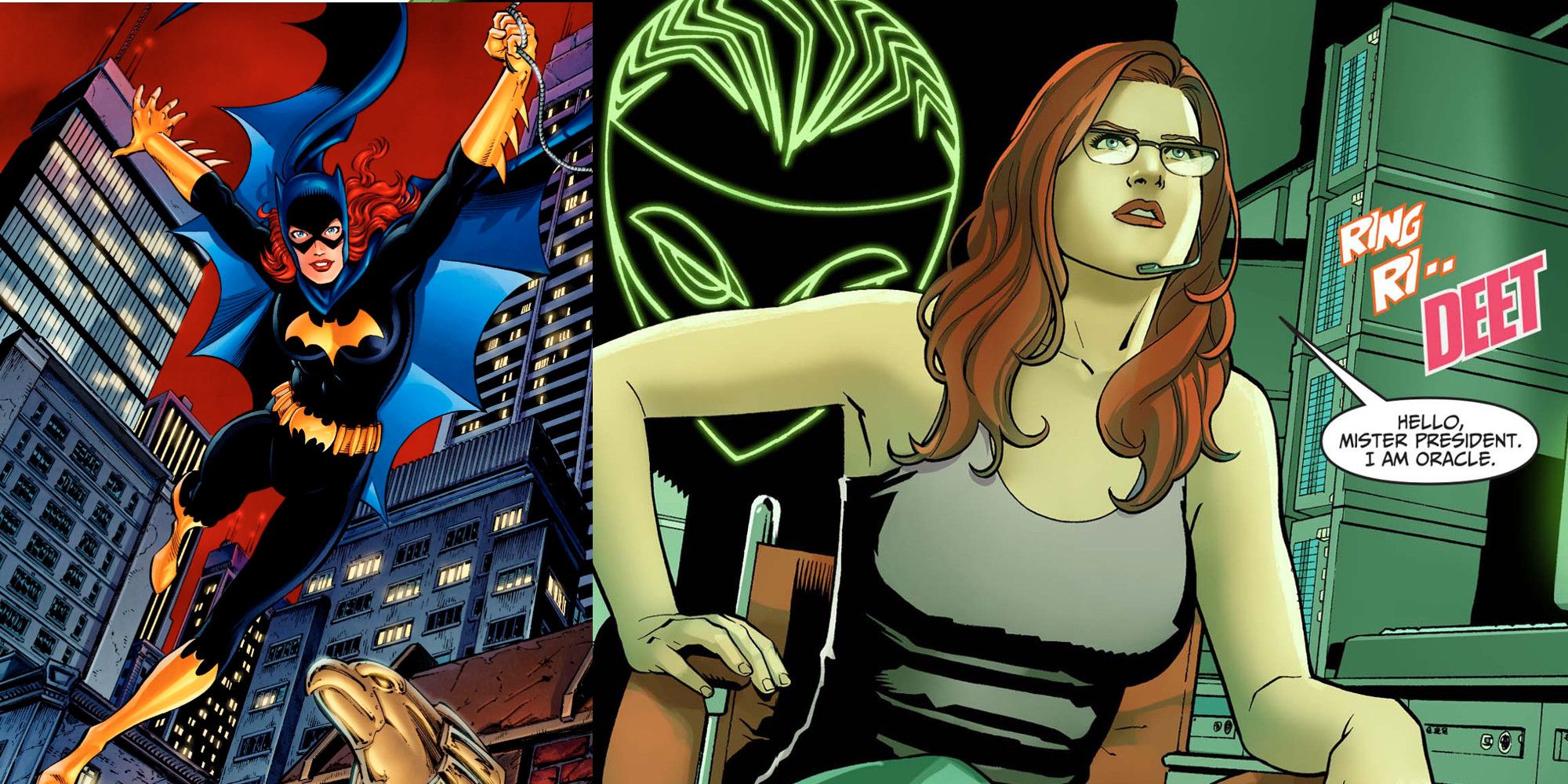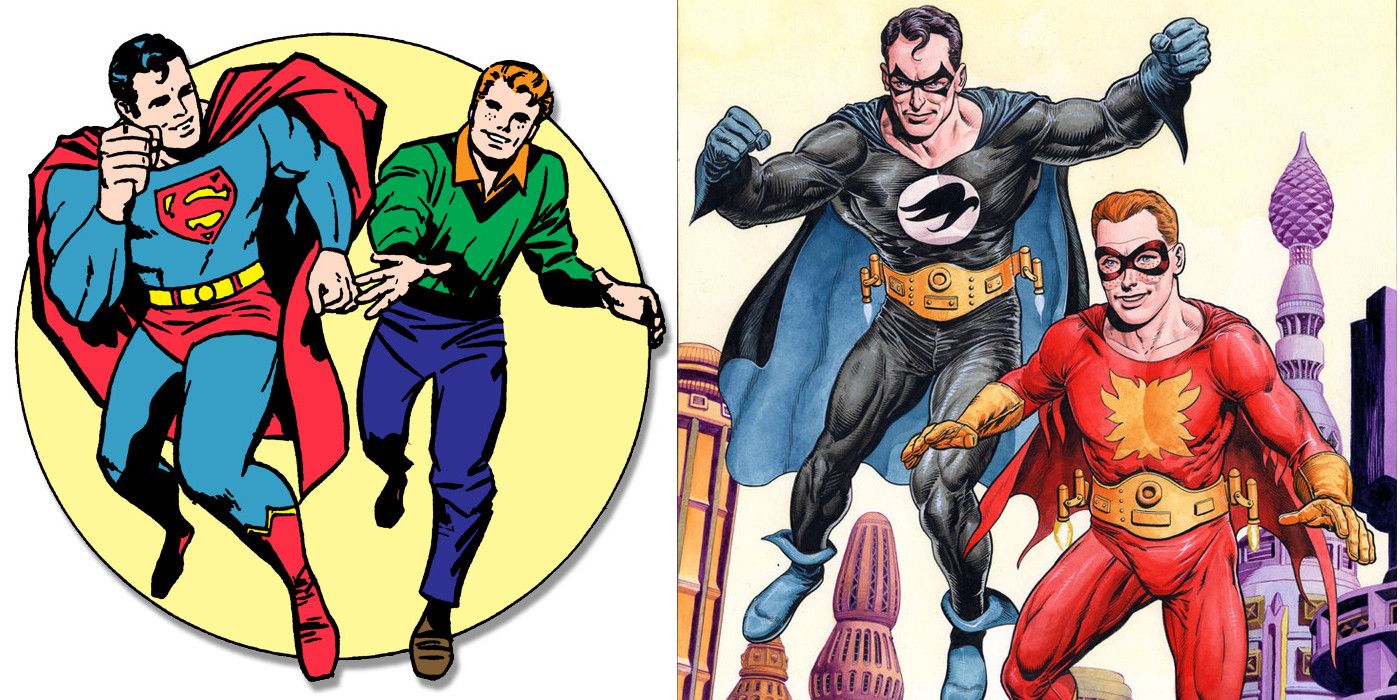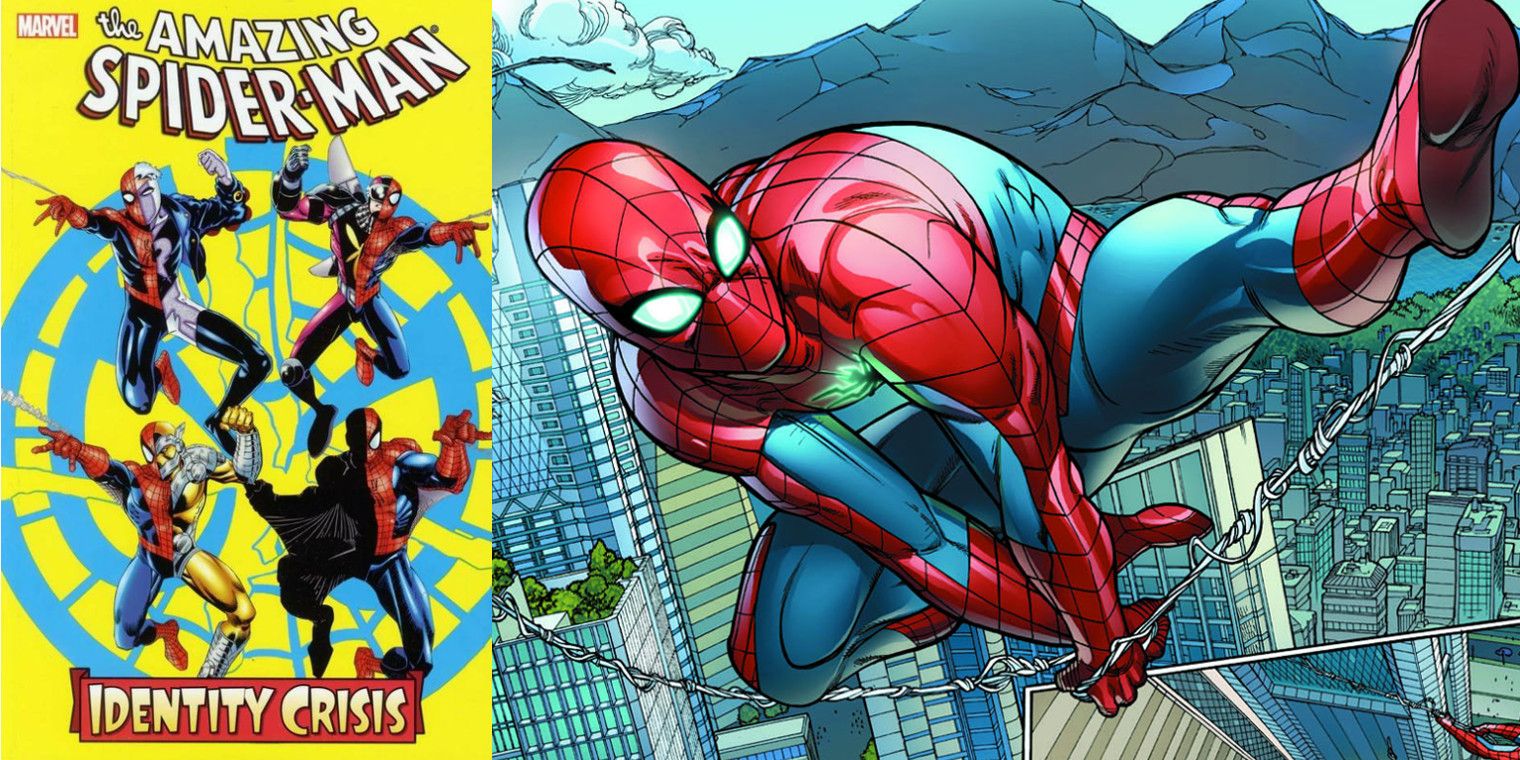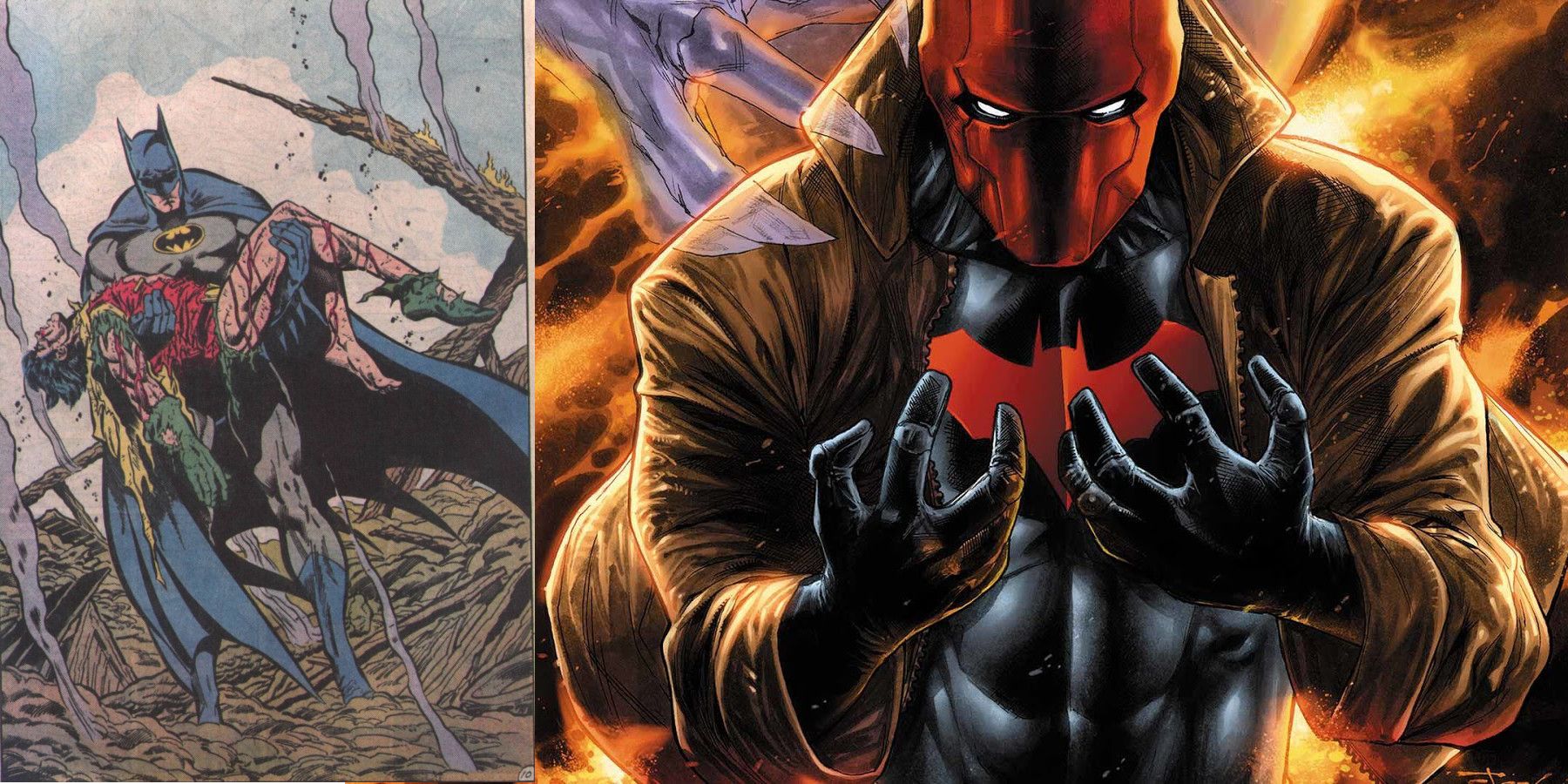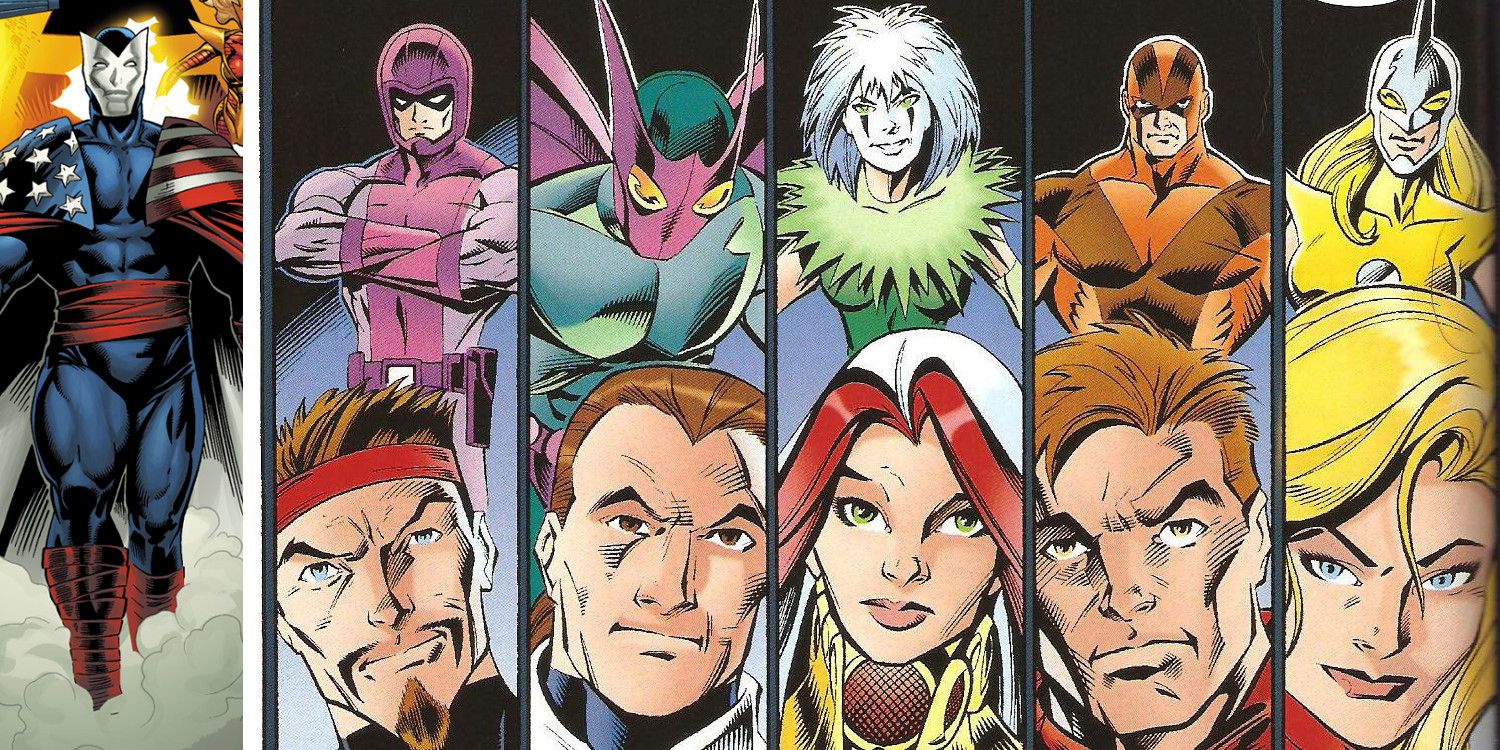A superhero's costume isn't just a suit of clothes. It's an identifier, a symbol of what that hero represents, a marker of his or her place in the world. It's a brand, if you will. But some superheroes have opted to change their brand, adopting not just new costumes, but new names and new personas as well.
RELATED: It's Elemental: 15 Superheroes Who Can Control The Elements
Some have done this because of personal growth, deciding that the old name and costume doesn't suit their current viewpoint on life. Some made the move because of personal tragedy, unwilling or unable to carry on as who they once were. Others have adopted new identities to be able to hide in plain sight and continue their work. And some have changed their names to serve their better angels -- or move closer to the dark side. Here are 15 examples of comic book characters who have taken on more than one superhero identity over their careers.
15 ROBIN/NIGHTWING
Robin's introduction in "Detective Comics" #38 (April 1940), was the beginning of a seven-decade run as a popular character. He was created by writer Bill Finger and artist Jerry Robinson. His partnership with Batman lightened the tone of the series, and led to his own headline spot in "Star Spangled Comics" in the 1940s, as well as a long-running solo title in the 1990s. Robin also was a founder and the leader of the Teen Titans. But as the character matured, the Batman/Robin team changed. Dick Grayson went off to college in "Batman" #219 (December 1969) and Robin worked with Batman sporadically in the following years, spending more of his time with the Titans.
In "The New Teen Titans," writer Marv Wolfman and artist George Perez further developed Robin's character, making him more of a leader and less of Batman's sidekick. This led Grayson to quit the Robin role in "The New Teen Titans" #39 (February 1984). He returned as Nightwing in "Tales of the Teen Titans" #44 (July 1984).
14 CAPTAIN AMERICA/U.S. AGENT
John Walker began his hero career as the Super Patriot in "Captain America" #323 (November 1986), speaking at rallies arguing that Captain America and his ideals were out of touch. A plot by the Red Skull caused Captain America to be called before the Commission on Superhuman Activities and told he would be obligated to obey the Commission's directives because the concept and colors of Captain America belong to the U.S. government. Instead, Steve Rogers resigned as Captain America, and Walker was tapped by the Commission to take on the role. Walker's ex-partners revealed his secret identity during his debut as the new Captain America, so a group called the Watchdogs murdered his parents. Walker took violent revenge on his ex-partners and the Watchdogs. Ultimately, the Red Skull engineered a battle between Walker and Rogers, now in the guise of The Captain. Rogers beats Walker, but the Red Skull escapes. The Commission strips Walker of the Captain America identity and offers it back to Rogers.
However, a Commission member staged Walker's murder to give him a new superhero identity, the US Agent, in "Captain America" #354, written by Mark Gruenwald, penciled by Kieron Dwyer and inked by Al Milgrom.
13 SPEEDBALL/PENANCE
Robbie Baldwin gained kinetic energy powers while witnessing an experiment into extra-dimensional energy gone bad and took the name Speedball. He first appeared in "Amazing Spider-Man Annual" #22 (January 1988), written by Tom DeFalco and drawn by Steve Ditko. Soon after, Speedball became a happy-go-lucky member of the New Warriors.
Things took a bad turn when the New Warriors tried to apprehend the villain Nitro in Stamford, Conn., while being followed by a camera crew for a reality TV series, in "Civil War" #1 (July 2006), written by Mark Millar, penciled by Steve McNiven and inked by Dexter Vines. Nitro triggered an explosion that killed 612 people, including 60 children. This led to federal action requiring superheroes to register with the government, precipitating "Civil War." Baldwin survives, adopts the persona Penance and is assigned to the Thunderbolts. His armored costume was covered with 612 spikes, representing the lives lost at Stamford. More recently, he has returned to being Speedball.
12 BANDIT/NIGHT THRASHER
The first Night Thrasher was Dwayne Taylor, founder of the New Warriors, which was introduced in "Thor" #411 (December 1989), written by Tom DeFalco, penciled by Ron Frenz and inked by Joe Sinott. Bandit is Donyell Taylor, Night Thrasher's half-brother, who was born as a result of a one-night-stand his father had. Donyell resented Dwayne for growing up with wealthy parents, but Dwayne felt no privilege; he had witnessed his parents being murdered and was raised by their killers, who wanted to use him for their own ends. As the vigilante Night Thrasher, Dwayne fought crime but often argued that his New Warriors teammates were too timid. Donyell later took on the guise of Bandit in "Night Thrasher" #3 (October 1993), in a story written by Fabian Nicieza, penciled by Ken Lashley and Fred Haynes with several inkers. To prove he could outdo Night Thrasher, Bandit began attacking his foes. He directly battled Night Thrasher twice, winning the first time and losing the second.
Dwayne is killed in the Stamford incident in "Civil War" #1. Afterward, Donyell forms a new team of New Warriors, adopting the Night Thrasher guise in "New Warriors" #4 (August 2007).
11 SUPERMAN/GANGBUSTER
Jose Delgado found that being a schoolteacher wasn't enough of a way for him to serve his community in Metropolis' Suicide Slum. A former Golden Gloves boxer, Delgado resolved to take the fight to the gangs as Gangbuster. But a battle against the villain Combattor left him paralyzed. While he was out of commission, a new Gangbuster came on the scene, one more violent and brutal than Delgado, but his identity was a mystery.
The mystery was revealed in "Superman" #27 (January 1989), in a story written by Roger Stern, Kerry Gammill and Brett Breeding, when the new Gangbuster fought the Guardian and his outfit was torn, uncovering Superman's costume! Superman had taken on the Gangbuster guise unconsciously, because of a nervous breakdown he suffered from guilt over his experience in the Time Trapper's pocket universe. There, he encountered three escapees from the Phantom Zone who destroyed nearly all life on that Earth -- and decided, for the safety of other lives elsewhere, that he had to execute them. This happened in "Superman" #22 (October 1988), written and drawn by John Byrne.
10 CAPTAIN AMERICA/NOMAD/THE CAPTAIN
Of all the patriotic heroes, Captain America stands tallest. But his faith in America's leadership was shaken during the "Secret Empire" storyline that ran through "Captain America" #169-#176, plotted and written by Steve Englehart (Mike Friedrich scripted some of the issues), penciled by Sal Buscema and inked by Frank McLaughlin or Vince Colletta. The shadowy group the Secret Empire, fronted by the Committee to Regain America's Principles, undertakes a campaign to discredit Captain America. The Committee frames Captain America for the murder of the Tumbler, leading he and the Falcon of criss-cross the country to clear his name. Meanwhile, the Secret Empire kidnaps several mutants, needing their energy to run the command ship of its leader, Number One. Number One threatens to trigger nuclear weapons if the United States does not yield to the Secret Empire. Captain America pursues Number One into the White House and unmasks him. Startled at the face he saw, he can't prevent Number One, a high-ranking government official, from committing suicide.
Steve Rogers renounces his Captain America identity in issue #176 (August 1974). In issue #180 (December 1974), he becomes Nomad, the Man Without a Country, but goes back in issue #184. While John Walker had the mantle, Rogers took on the identity of The Captain, wearing a costume that would later be used as the U.S. Agent costume.
9 ANT-MAN/GIANT-MAN/GOLIATH/YELLOWJACKET/THE WASP
The poster child for multiple superhero identities, scientist Henry Pym was introduced in a one-off sci-fi story, "The Man in the Ant Hill," in "Tales to Astonish" #27 (January 1962), plotted by Stan Lee, scripted by Larry Lieber, penciled by Jack Kirby and inked by Dick Ayers. Pym returned as costumed superhero Ant-Man in issue #35, and co-founded the Avengers, along with girlfriend Janet van Dyne, the Wasp. Pym invents a method to increase his size in issue #49 (November 1963), becoming Giant-Man.
Pym and van Dyne take a leave of absence from the Avengers. When they return in "Avengers" #28 (May 1966), Pym has a new costume and name, Goliath. Unfortunately, changing sizes causes him pain; worse, he gets stuck at 10 feet tall for several issues. After that problem is fixed, a new costumed character, Yellowjacket, shows up at Avengers Mansion in "Avengers" #59, declaring he's killed Henry Pym and he wants to join the team(!) Nuttier still, van Dyne says she'll marry him! Several episodes of unstable mental episodes occur in the succeeding years. After van Dyne is seemingly killed in "Secret Invasion" #8 (January 2009), Pym adopts the persona The Wasp to honor her.
8 HAWKEYE/GOLIATH
As Hawkeye, Clint Barton made his bid to join the Avengers in brash style, breaking into their mansion and tying up butler Jarvis in "Avengers" #15 (April 1965), written by Stan Lee, with layouts by Jack Kirby, pencils by Don Heck and inks by Mike Esposito. To prove his prowess, Hawkeye frees Jarvis with well-placed shots from his bow and arrow. Instead of locking him up, the Avengers accepted Hawkeye on the word of Iron Man, who recognized the bowman's desire to reform.
Hawkeye carried on with the Avengers while members came and went, including Hank Pym and Janet van Dyne after their wedding in issue #60. But in "Avengers" #63 (April 1969), written by Roy Thomas, drawn by Gene Colan and inked by George Klein, Hawkeye's bow breaks at a crucial moment. Later, Pym and van Dyne return to the team, with Pym declaring he'll continue as Yellowjacket. Hawkeye soon gets a distress call from the Black Widow, and runs to her rescue -- but first dons Pym's unused Goliath costume and takes a dose of his growth serum, becoming the new Goliath. He goes back to being Hawkeye in "Avengers" #98 (May 1972).
7 THE FALCON/CAPTAIN AMERICA
The Falcon has served as a partner to Captain America and as a superhero in his own right ever since "Captain America" #117 (September 1969), written by Stan Lee, penciled by Gene Colan and inked by Joe Sinnott. An early adventure pitted the Falcon against the Red Skull, but the notion that Sam Wilson had been the street hustler "Snap" Wilson was retconned away in "All-New Captain America" #3 (March 2015), written by Rick Remender, penciled by Stuart Immonen and inked by Wade von Grawbadger.
Wilson took on the Captain America guise in "All-New Captain America" #1, after a run of stories where the Super-Soldier Serum in Steve Rogers' system was negated. This caused his body to advance to its chronological age, giving him the physique of a man in his 90s. Rogers personally tapped Wilson to take over for him, and he continues even after Rogers was restored to youth in "Captain America: Sam Wilson" #7 (May 2016), written by Nick Spencer and drawn by Angel Unzueta and Daniel Acuña.
6 BATGIRL/ORACLE
Created by writer Gardner Fox and artist Carmine Infantino in "Detective Comics" #359 (January 1967), Batgirl was secretly Barbara Gordon, daughter of Batman's ally, Gotham Police Commissioner James Gordon. Gordon had a Ph.D in library science, was head librarian for Gotham's Public Library, held a brown belt in judo and had an eidetic memory. She created a functional Batgirl outfit for a costume party and defeated villain Killer Moth that night, inspiring her to continue as a crimefighter. Batgirl had many adventures in the following years, but retired in "Batgirl Special" #1 (July 1988), written by Barbara Kesel, and penciled by Barry Kitson. After that, she was famously shot and paralyzed in "The Killing Joke," written by Alan Moore and drawn by Brian Bolland.
However, writers Kim Yale and John Ostrander resolved that should not be the end of Barbara Gordon's story. Mysterious information broker and computer hacker Oracle surfaced in "Suicide Squad" #23 (January 1989), but her identity was not revealed as Gordon until issue #38 (February 1990). Oracle went on to establish the Birds of Prey freelance team, but the Oracle aspect of Gordon's history was minimized under the New 52.
5 THE HULK/JOE FIXIT
Joe Fixit has a different aspect and demeanor than the ever-rampaging Hulk; he's a bit shorter, somewhat smarter and whole lot nastier. And where the Hulk traditionally has green skin and runs around in torn purple trousers, Joe Fixit -- an enforcer for Las Vegas casino owner Michael Berengetti -- is gray and favors tailored pinstripe suits and fedoras.
The Hulk was gray in his debut in "Incredible Hulk" #1 (May 1962), but poor printing led Marvel to change his look to green with the next issue. The fact that the Hulk was initially gray was mostly ignored in the following years, but the Gray Hulk was brought back in issue #324 (October 1986), written and drawn by Al Milgrom and finished by Dennis Janke. The Gray Hulk's return was a side effect of a botched effort to reintegrate Bruce Banner's body and mind with the Hulk's after they were separated in issue #315 (January 1986). After the Hulk is believed to have been killed in issue #345, Joe Fixit first appears in issue #347 (September 1988), written by Peter David, drawn by Jeff Purves and inked by Michael Gustovich and Valerie Gustovich.
4 SUPERMAN AND JIMMY OLSEN/NIGHTWING AND FLAMEBIRD
"Superman" #158 (January 1963) introduced readers to Nightwing and Flamebird, the alternate identities of Superman and his pal Jimmy Olsen, in an adventure in the Bottle City of Kandor in which they found themselves on the run as outcasts. Super-powered bandits are rampaging through Metropolis, and Superman concludes they must have come from Kandor, although he's baffled as to how they've become full-sized. He and Jimmy use Brainiac's shrink ray to enter the bottled city to investigate.
They learn that Kandorian scientist Than-Ol has developed a way to enlarge the Kandorians -- and he's been telling the citizens that Superman could have done so earlier. The angry Kandorians attack Superman on sight, but his network of still-loyal friends help him hide out. Superman and Jimmy, inspired by Batman and Robin, adopt the identities of Nightwing and Flamebird, modeled on Kryptonian legends. Then they race against time to stop Than-Ol from enlarging Kandor, because his process is unstable and will destroy the city if it is not reversed.
"Superman in Kandor" was written by Edward Hamilton, drawn by Curt Swan and inked by George Klein.
3 HORNET, PRODIGY, RICOCHET, DUSK
In the "Identity Crisis" storyline that spanned four "Spider-Man" titles in May-June 1998 -- unrelated to the 2004 DC series, of course -- Spider-Man was framed for the murder of a smalltime crook called Joey Z. Worse, Norman Osborn, the villain who set him up, tightened the frame by goading Spider-Man into assaulting him. In short order, a $5 Million reward is issued for the capture of Spider-Man, and a whole city full of people are more than willing to attack him to collect.
Unable to function as Spider-man, Peter Parker adopts four different guises. He was Ricochet in "Amazing Spider-Man" #434-435; Hornet in "Sensational Spider-Man" #27-28; Dusk in "Peter Parker: Spider-Man" #91-92; and Prodigy in "The Spectacular Spider-Man" #257-258. Each guise was outfitted with different gear, and in each, Parker acted differently. Moreover, Prodigy and Hornet were public do-gooders. Ricochet and Dusk, however, were rather shady, the better for Parker to investigate the real killer, The Trapster, whose pastes simulated Spider-Man's web fluid and were stuffed into Joey Z's lungs. Parker gets the Trapster to turn on Osborn and make a public confession, clearing Spider-Man's name.
2 ROBIN/THE RED HOOD
Jason Todd's entire existence is a series of retcons. Introduced in "Detective Comics" #534 (January 1984), Todd, much like Dick Grayson, is a trapeze artist for a circus targeted by a protection racket. Todd's parents are fed to crocodiles by Killer Croc in "Detective Comics" #526 (May 1983). Bruce Wayne adopts Todd and he becomes Robin in "Batman" #368 (February 1984).
That Jason Todd went away with the "Crisis on Infinite Earths." The new Todd surfaced in "Batman" #408, now a homeless kid whose father had been murdered by Two-Face. Todd becomes the new Robin, but his bitter nature causes friction in the Batman/Robin team. In "A Death in the Family" ("Batman" #426-429, December 1988-January 1989), written by Jim Starlin and drawn by Jim Aparo and Mike DeCarlo, the Joker beats this Robin nearly to death, stashes him and his mother in a warehouse and blows it up. Todd was revived during "Infinite Crisis" by Superboy's fists punching reality, but that was retconned to his being revived in the Lazarus Pit. Well after that, he took on the persona of the Red Hood -- one of the Joker's early guises -- in "Batman" #635 (February 2005).
1 MASTERS OF EVIL/THE THUNDERBOLTS
The Thunderbolts first appeared in "The Incredible Hulk" #449 (January 1997) as a new superhero team out to help people, which they did when the Hulk destroyed a dam just to get them off his case, in a story written by Peter David and drawn by Mike Deodato and Tom Wegryzn. And after the battle with Onslaught led to the seeming deaths of the Fantastic Four and the Avengers in "Onslaught: Marvel Universe" (October 1996), the Thunderbolts let the world know they will serve in the stead of the lost heroes.
However, writer Kurt Busiek gives us a famous twist at the end of issue "Thunderbolts" #1 (April 1997): Team members Citizen V, Techno, MACH-1, Songbird, Atlas and Meteorite are actually Masters of Evil villains Baron Zemo, Fixer, Beetle, Screaming Mimi, Goliath, and Moonstone! Zemo engineered this scam to gain power, constantly pressing to gain access to the Fantastic Four's and Avengers' equipment and files. Unfortunately for Zemo, he is forced to take on newbie hero Jolt, who thinks they are actual superheroes. Worse, some Thunderbolts like working for good and sabotage the battle against the returned Avengers and Fantastic Four.
Did we forget anybody major on this list? Let us know in the comments!

